|
Books Should Be Free Loyal Books Free Public Domain Audiobooks & eBook Downloads |
|
|
Books Should Be Free Loyal Books Free Public Domain Audiobooks & eBook Downloads |
|
Religion |
|---|
|
Book type:
Sort by:
View by:
|
By: Pope Gregory I (540-604) | |
|---|---|
 Morals on the Book of Job (Volume I, Part I)
Morals on the Book of Job (Volume I, Part I)
Saint Gregory's Commentary on Job, sometimes called "An Extensive Consideration of Moral Questions," was written between 578 and 595. It is Gregory's major work, filling some 35 books or 6 volumes, making perhaps the single largest surviving patristic work. In his work he both comments on the book of Job and draws moral lessons from it. Pope Gregory is considered a saint in both the Eastern Orthodox church and in the West in the Catholic church and some Protestant churches. - Summary by ancientchristian | |
 Homily of Saint Gregory the Great On the Pastoral Office
Homily of Saint Gregory the Great On the Pastoral Office
A homily by Saint Gregory the Great on the virtues, responsibilities, and shortfalls of the clergy; recommended to the attention of all clergy by Pope Pius X on the occasion of the Saint's thirteenth centenary. - | |
By: Pope Leo XIII (1810-1903) | |
|---|---|
 Great Encyclical Letters of Pope Leo XIII
Great Encyclical Letters of Pope Leo XIII
Pope Leo XIII (2 March 1810 – 20 July 1903), born Vincenzo Gioacchino Raffaele Luigi Pecci to an Italian comital family, reigned from 20 February 1878 to his death in 1903. He was the oldest pope (reigning until the age of 93), and had the third longest pontificate. He is well known for his intellectualism, the development of social teachings with his famous papal encyclical Rerum Novarum and his attempts to define the position of the Catholic Church with regard to modern thinking. He issued a record eleven encyclicals on the rosary earning the moniker the "Rosary Pope"... | |
 Encyclical Letters of Pope Leo XIII
Encyclical Letters of Pope Leo XIII
Pope Leo XIII wrote eighty-eight Encyclicals during his twenty-five year pontificate . Fifty-six of those are included in this collection. Among the topics covered are the Rosary, socialism, Christian marriage, labour, freemasonry, Church and state, human liberty, dueling, the Holy Eucharist, and more. | |
By: Pope Pius IX (1792-1878) | |
|---|---|
 Quanta Cura & The Syllabus of Errors
Quanta Cura & The Syllabus of Errors
This encyclical letter of Pope Pius IX was promulgated in 1864 and issued with the attached Syllabus of Errors. The document was dispatched to all the bishops of the Catholic world “in order that these same bishops may have before their eyes all the errors and pernicious doctrines which he [Pius IX] has reprobated and condemned.” The Syllabus is a catalogue of eighty propositions, which the pope condemned as erroneous, and which are considered to form the basis of the heresy of Modernism, which has been anathematized by a number of succeeding pontiffs. - Summary by Algy Pug | |
 Encyclical Letters of Pope Pius IX
Encyclical Letters of Pope Pius IX
Amongst the vast correspondence of the longest-reigning pontiff since St. Peter, Pope Pius IX wrote upwards of forty Encyclicals during his thirty-two year pontificate . Twenty-six of these are included in this collection. | |
By: Pope St Pius X (1835-1914) | |
|---|---|
 Encyclical Letters of Pope St. Pius X
Encyclical Letters of Pope St. Pius X
During his eleven year pontificate Pope St. Pius X wrote 16 encyclicals. The subjects ranged from saints, The Immaculate Conception, The Restoration of All Things in Christ, Catholic Social Action, and more. This is collection of 14 out of the 16 encyclicals that he authored. His most well known encyclical, Pascendi, has been recorded separately, and can be found at this link here: Pascendi Dominici Gregis | |
 Pascendi Dominici Gregis (On the Errors of the Modernists)
Pascendi Dominici Gregis (On the Errors of the Modernists)
During a relatively short pontificate Pope Pius X devoted much of his time to dealing with issues related to the rapid spread of secularism in the early Twentieth century. Pius eschewed the liberal approach of his immediate predecessor, Leo XIII, favouring instead the strict doctrinal guidelines established by Pope Pius IX in the Syllabus of Errors . Pius X defined the root cause of the decline of the influence of the Catholic Church to be Modernism, a philosophical and artistic movement which came to prominence in the later Nineteenth Century... | |
By: Proclus (412-485) | |
|---|---|
 Elements of Theology
Elements of Theology
The Elements of Theology was written by the Greek Neoplatonist philosopher Proclus and translated by Thomas Taylor who named his youngest son Thomas Proclus Taylor. This book consists of 211 propositions, each followed by a proof, beginning from the existence of the One and ending with the descent of individual souls into the material world. Saint Thomas Aquinas recognized that the Liber de Causis , which had been attributed to Aristotle, was actually a summary of the Elements of Theology, likely written by an Arabic interpreter. - Summary adapted from Wikipedia by Geoffrey Edwards | |
 Six Books of Proclus, the Platonic Successor, on the Theology of Plato
Six Books of Proclus, the Platonic Successor, on the Theology of Plato
The Six books of Proclus, the Platonic successor, on The Theology of Plato to which a Seventh book is added by the translator, Thomas Taylor, in order to supply the deficiency of another book on this subject, which was written by Proclus, but since lost. According to the 1995 Prometheus Trust edition Book 3 Chapter 1 of this translation contains Chapters 1-4 from the original Greek, Chapter 2 contains the Greek chapters 5-6 and Chapter 3 contains the Greek Chapters 7-8. Thereafter, the translated and Greek chapters match beginning at Chapter 9... | |
By: Ralph Connor | |
|---|---|
 The Man from Glengarry
The Man from Glengarry
With international book sales in the millions, Ralph Connor was the best-known Canadian novelist of the first two decades of the Twentieth Century. The Man from Glengarry was his most popular and accomplished work. Immediately after its publication in 1901, the novel spent several months in the top ranks of the New York Times "Books in Demand" list.We follow the story of Ranald Macdonald, who is shaped by family and community in rural eastern Ontario in the early decades after Canadian confederation... | |
By: Ralph Waldo Trine (1866-1958) | |
|---|---|
 In Tune with the Infinite
In Tune with the Infinite
Trine tells us that by connecting and harmonizing with the Universe we attract love, health, peace and success. Trines' writings may have been the most important to the "New Thought" movement of the late 1800's and early 1900's which was the forerunner to the "New Age" movement. | |
By: Rebecca Sophia Clarke (1833-1906) | |
|---|---|
 Little Prudy
Little Prudy
I am going to tell you something about a little girl who was always saying and doing funny things, and very often getting into trouble. Her name was Prudy Parlin, and she and her sister Susy, three years older, lived in Portland, in the State of Maine, though every summer they went to Willowbrook, to visit their grandmother. (From chapter 1 ) | |
By: Regina Victoria Hunt | |
|---|---|
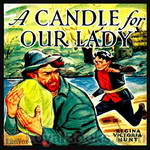 A Candle For Our Lady
A Candle For Our Lady
Dark times for British Catholics hung over England in the days of King Henry VIII. Henry, influenced by the hated Thomas Cromwell, fell into opposition with them, suppressing them, and closing religious houses. In that period a famous shrine, erected centuries earlier at Walsingham and dedicated to our Lady, drew people from far and near for it was a favorite place of pilgrimage and the site of many miracles.On their grandmother's and uncle's farm, far removed from this scene of persecution, were Jemmy Reynolds and his sister Joan... | |
By: Reuben Archer Torrey (1856-1928) | |
|---|---|
 Fundamental Doctrines of the Christian Faith
Fundamental Doctrines of the Christian Faith
We were having a great many accessions to our church. While many of these came by letter form other churches, many of them were new converts and had had practically no systematic instruction in the fundamental truths of the Christina faith, so we announced a series of sermons on The Fundamental Doctrines of the Christian Faith. There was immediately a large increase in the attendance at the services where these addresses were given, and this increase has kept up until on the last Lord's Day we had much the largest attendance we have ever had, excepting Easter Sunday... | |
 How to Succeed in the Christian Life
How to Succeed in the Christian Life
"I have for years felt the need of a book to put in the hands of those beginning the Christian life that would tell them just how to make a complete success of this new life upon which they were entering. I could find no such book, so I have been driven to write one. This book aims to tell the young convert just what he most needs to know. I hope that pastors and evangelists and other Christian workers may find it a good book to put in the hands of young converts. I hope that it may also prove a helpful book to many who have long been Christians but have not made that headway in the Christian life that they long for." - Summary by the author | |
By: Rev. Francois Xavier Schouppe (1824-1904) | |
|---|---|
 Purgatory
Purgatory
Purgatory by FX Schouppe, SJ, a french Catholic theologian who died in November, 1904 details the place where saved souls go before Heaven. Think of it as a temporary cleaning or purging place for those who aren't going to Hell. Fire, burning and intense pain for various lengths of time make up the experience of Purgatory. The author details eyewitness accounts and blood chilling stories from the perspective of a number of saints who went through it. We can pray, give alms and have Masses said for the souls in Purgatory to shorten their and our time there. This book really turned me around! Purgatory will scare the Hell out of you! | |
By: Rev. Gerald T. Brennan (1898-1962) | |
|---|---|
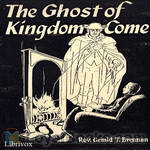 The Ghost of Kingdom Come
The Ghost of Kingdom Come
A word about ghosts. Do you believe in Ghosts? Are you afraid of Ghosts? Ghosts are truly real. St. Joseph, St. Peter, St. Bridget are real ghosts. This little book is written with the hope that the boys and girls who read it, will someday become “Ghosts of Kingdom Come”! ~ Father GeraldConsidered one of the “Angel Food” series of books, this volume is a series of delightful stories for children – each with a moral – woven inside the story of a ghostly visitor, to a priest visiting an old castle. (Summary from the introduction and by Maria Therese) | |
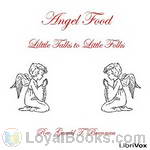 Angel Food: Little Talks to Little Folks
Angel Food: Little Talks to Little Folks
"Angel Food" consists of a series of short sermons for children on the truths of the Catholic Faith - but told with engaging stories, in a style and simple language that children can understand.The author was a parish priest in New York for many years during the mid 1900's. He was the author of several books for children, the most well known being the books in what is considered the "Angel Food" series. | |
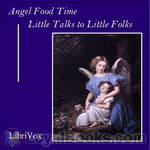 Angel Food Time: Little Talks to Little Folks
Angel Food Time: Little Talks to Little Folks
This is the sixth and final volume of the "Angel Food" Series by Father Brennan. This volume consists of 28 charming selections with titles such as "Six Red Roses", "The Three Little Angels", "A Surprise From Santa Claus" and "The Boy Who Dusted the Devil's Tail". | |
 For Heaven's Sake: Little Talks to Little Folks
For Heaven's Sake: Little Talks to Little Folks
This is the second book in the “Angel Food” series by the author. It consists of a series of short sermons for children, in the form of a charming story. The author was a Catholic parish priest in New York for many years during the mid 1900’s. He was the author of several books for children, the most well known being the books in what is considered the “Angel Food” series. | |
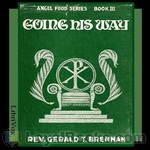 Going His Way: Little Talks to Little Folks
Going His Way: Little Talks to Little Folks
Sermons for children‚ why not? After all, children form a very important part of every congregation. They have souls, and their souls must be saved. Children must be taught; they must be instructed. They must learn to know, love, and serve God. This is the third book in the "Angel Food" series. (Angel Food, For Heaven's Sake, Going His Way) (From the Foreword by Fr. Brennan and Maria Therese) | |
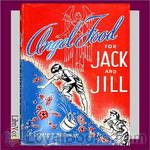 Angel Food For Jack and Jill: Little Talks to Little Folks
Angel Food For Jack and Jill: Little Talks to Little Folks
This is book five of the “Angel Food” series by the author. It consists of a series of 28 short sermons for children, in the form of a charming story. The author was a Catholic parish priest in New York for many years during the mid 1900’s. He was the author of several books for children, the most well known being the books in what is considered the “Angel Food” series. | |
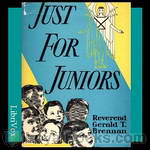 Just For Juniors: Little Talks to Little Folks
Just For Juniors: Little Talks to Little Folks
This fourth addition to Father Brennan's delightful series of "Angel Food" story books brings twenty-eight more tales which, while they excite youthful imaginations, at the same time teach the important lessons of knowing, loving and serving God, and point the way - the children's own little way to heaven. | |
 Man Who Dared a King
Man Who Dared a King
"The Man Who Dared a King" is a simple children's story of St. John Fisher, the heroic bishop who chose Christ over Henry VIII. | |
 God Died at Three O'Clock
God Died at Three O'Clock
From the writer of "Angel Food" comes a simple children's book on the passion and death of Our Lord Jesus Christ. | |
By: Rev. H. G. Hughes (1868-1943) | |
|---|---|
 Seven Last Words on the Cross
Seven Last Words on the Cross
A course of Lenten sermons on the seven last words of Our Lord Jesus Christ on the Cross. | |
By: Rev. Heinrich Nagelschmitt (1814-1892) | |
|---|---|
 Chief Evils of the Times
Chief Evils of the Times
The evils of the times are many. and it is the ever recurring duty of the Church to combat them relentlessly. Especially during Lent the attack is particularly vigorous and deliberate. The Rev H. Nagelschmitt, in a course of Lenten sermons, outlines a very effective campaign against these stubborn evils. It will prove of great service, as it deals with such omnipresent corruptive influences as frivolity, contempt for authority, love of pleasure, human respect, and other well known human frailties. | |
By: Rev. Henry Grey Graham (1874-1959) | |
|---|---|
 Where We Got the Bible: Our Debt to the Catholic Church
Where We Got the Bible: Our Debt to the Catholic Church
In "Where We Got the Bible", the author, himself a convert from Calvinism, explains how the Catholic Church compiled the sacred text, how medieval monks preserved it, and how Catholic scholars first gave Christians the Bible in their own languages. This little book about the Bible grew out of lectures which the writer delivered on the subject to mixed audiences. The lectures were afterwards expanded, and appeared in a series of articles in the Catholic press 1908-9, and are now with slight alterations reprinted... | |
By: Rev. M. P. Hill | |
|---|---|
 Catholic's Ready Answer
Catholic's Ready Answer
A popular vindication of Christian beliefs and practices against the attacks of modern criticism. Ninety-eight topics, in alphabetical order, giving an explanation of the Catholic teachings on the subjects. | |
By: Rev. Peter Guilday (1884-1947) | |
|---|---|
 The Three Hours' Agony of Our Lord Jesus Christ
The Three Hours' Agony of Our Lord Jesus Christ
A book of sermons on the Seven Last Words of Our Lord Jesus Christ. Given at the Church of Our Lady of Lourdes, New York City, on Good Friday, 1916. | |
By: Rev. Thomas J. Hosty (1910-2004) | |
|---|---|
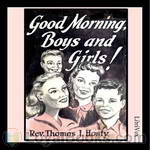 Good Morning, Boys and Girls!
Good Morning, Boys and Girls!
Forty simple, delightful sermons for children. The stories cover a full school year, all Sundays and a few holydays in between. Under such engaging chapter titles, as Chasing Rainbows, Caterpillars, The Best Christmas Gift, and Breakfast of Champions, the book entertains while it instructs. Here Heaven takes on a new closeness as “God’s Home”; the Bible is a collection of “Letters from God”; while the devil is called “a Real Bogeyman.” Such important subjects as beauty of soul, gratitude, Sunday Mass, the foolishness of sin, the Rosary, and temptation are dealt with in a refreshing manner guaranteed to capture the interest of every child. | |
By: Rev. Wilfrid J. Diamond | |
|---|---|
 Sunday Morning Storyland
Sunday Morning Storyland
A collection of short sermons for children written by a Catholic priest. Each with a story woven in teaches a moral or virtue for that week. | |
By: Richard Baxter (1615-1691) | |
|---|---|
 Quaker's Catechism
Quaker's Catechism
I suppose thou wilt marvel that I trouble myself with so wild a generation as the people called Quakers are or that I trouble thee with a few hasty lines which I wrote on such an occasion. I'll truly tell thee the cause of both: They sent me five several papers, one of them containing the queries which I answer, and others of them almost nothing but a bundle of filthy railing words. They chose out one day, when it pleased God to confine me to my chamber by sickness to come into our assembly and after... | |
By: Richard Cecil (1748-1810) | |
|---|---|
 On Subjects Connected with the Christian Ministry
On Subjects Connected with the Christian Ministry
A collection of brief observations about the Christian ministry, grouped thematically. "On my first intercourse with Mr. Cecil, now upwards of fifteen years since, when in the full vigor of his mind, I was so struck with the wisdom and originality of his remarks, that I considered it my duty to record what seemed to me most likely to be useful to others. It should be observed that Mr. Cecil is made to speak often of himself: and, to persons who do not consider the circumstances of the case, there... | |
By: Richard Challoner (1691-1781) | |
|---|---|
 Think well on't, or, Reflections on the great truths of the Christian religion for every day of the month
Think well on't, or, Reflections on the great truths of the Christian religion for every day of the month
Richard Challoner was an English Roman Catholic bishop. He is perhaps most famous for his revision of the Douay–Rheims translation of the Bible. In this work he gives reflections on the general truths about the Christian religion for each day of the month. He also provides an introduction about how to meditate on them throughout the day. - Summary by ancientchristian | |
By: Richard Francis Burton (1821-1890) | |
|---|---|
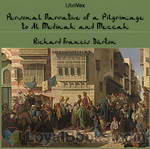 Personal Narrative of a Pilgrimage to Al-madinah and Meccah
Personal Narrative of a Pilgrimage to Al-madinah and Meccah
Sir Richard Francis Burton (1821 – 1890) was an English explorer, translator, writer, soldier, orientalist, ethnologist, linguist, poet, hypnotist, fencer and diplomat. He was known for his travels and explorations within Asia and Africa as well as his extraordinary knowledge of languages and cultures. According to one count, he spoke 29 European, Asian, and African languages.Burton's best-known achievements include traveling in disguise to Mecca, The Book of One Thousand Nights and A Night, an... | |
By: Richard Hooker (1554-1600) | |
|---|---|
 Of the Laws of Ecclesiastical Polity, Book 1
Of the Laws of Ecclesiastical Polity, Book 1
Hooker resolved to investigate the position of the English Church, and to attempt to answer the question What is the basis upon which Church laws and Church government rest? And his magnum opus ‘The Laws of Ecclesiastical Polity’ was the result. The Puritan system with which Richard Hooker found himself face to face, and which he so resolutely and courageously set himself the task of discrediting, speaking broadly, was based on the assumption that, in all matters affecting religious worship, discipline, and government, an unchangeable rule is laid down in Holy Scripture, and in Holy Scripture alone... | |
By: Richard Sibbes (1577-1635) | |
|---|---|
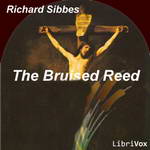 The Bruised Reed
The Bruised Reed
Richard Sibbes was a Puritan pastor and theologian in the 17th century. His best known work, The Bruised Reed, is based on a Scripture verse from Matt. 12:20: "A bruised reed shall he not break, and smoking flax shall he not quench, till he send forth judgment unto victory." Sibbes uses this text to respond to the despondent thoughts and fears that many Christians have. He draws a picture of Christ's gentleness and mercy for the Christians who feel themselves small and weak. The Bruised Reed is full of an amazing amount of soul-comfort... | |
 Faithful Covenanter
Faithful Covenanter
The Faithful Covenanter in two sermons upon Genesis 17:7 by the late learned and reverend divine, Richard Sibbs, Doctor in divinity, master of Katherine Hall in Cambridge and sometimes preacher to the honourable society of Grayes-Inne. Nehemiah 1:5 O Lord God of heaven, the great and terrible God, that keepeth covenant and mercy for them that love him. - Summary from the Title Page | |
 Rescue from Death, with a Return of Praise
Rescue from Death, with a Return of Praise
A sermon, preached after the cessation of the 1625-1626 plague in London, where "from above five thousand a week it is come to three persons". He expresses thankfulness "that there is free commerce and intercourse as before; that we can meet thus peaceably and quietly at God's ordinances, and about our ordinary callings". Sibbes' text is Psalm 107 verse 17: "Fools, because of their transgressions, and because of their iniquities, are afflicted" etc. "You know how God hath dealt of late with this city, and with ourselves indeed; for we are all of one body politic, and however God visited them, yet it was our sins also that provoked him... | |
By: Richard W. Church (1815-1890) | |
|---|---|
 Bacon
Bacon
This investigation of Bacon the scholar and man of letters begins with a look at the early days ang progresses to his relationships with Queen Elizabeth and James I. It includes accounts of his positions as solicitor general, attorney-general, and chancellor. The book concludes with Bacon's failure, his overall philosophy, and summaries of his writings. | |
By: Richard Wilson (1887-1976) | |
|---|---|
 Indian Story Book
Indian Story Book
Richard Wilson has taken tales from the two great Indian epics, the Rāmāyaṇa and the Mahābhārata, as well as other early sources, and has retold them in English, in an effort to showcase to young English-speaking readers that 'oriental' stories share the same elements as tales they are used to. Love, hate, virtue, oppression, tenderness, bravery and resourcefulness and an ultimate desire to conquer evil. - Summary by Paraphrased from the Introduction | |
By: Robert Blatchford (1851-1943) | |
|---|---|
 God and my Neighbour
God and my Neighbour
"I have been asked why I have opposed Christianity. I have several reasons, which shall appear in due course. At present I offer one. I oppose Christianity because it is not true. No honest man will ask for any other reason. But it may be asked why I say that Christianity is not true; and that is a very proper question, which I shall do my best to answer." Thus states the author in one of the first chapters of this book, and subsequently he lays down his apology, drawing his conclusions from numerous books published by believers and unbelievers alike, and, of course, from the bible itself. | |
By: Robert Green Ingersoll (1833-1899) | |
|---|---|
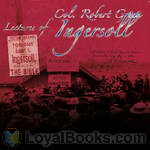 Lectures of Col. R. G. Ingersoll
Lectures of Col. R. G. Ingersoll
Colonel Robert Green Ingersoll (1833–1899) was a Civil War veteran, American political leader and orator during the Golden Age of Freethought, noted for his defense of atheism. This book is the first of two volumes collecting Ingersoll’s speeches. | |
By: Robert Hugh Benson (1871-1914) | |
|---|---|
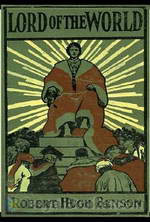 Lord of the World
Lord of the World
“Mr. Benson sees the world, four or five generations hence, free at last from all minor quarrels, and ranged against itself in two camps, Humanitarianism for those who believe in no divinity but that of man, Catholicism for those who believe in no divinity but that of God.” This apocalyptic novel from the early 1900's is sometimes deemed one of the first modern dystopias. | |
 Come Rack! Come Rope!
Come Rack! Come Rope!
Come Rack! Come Rope! is a historical novel by the English priest and writer Robert Hugh Benson, a convert to Catholicism from Anglicanism. Set in Derbyshire at the time of the Elizabethan persecution of Catholics, when being or harboring a priest was considered treason and was punishable with death, it tells the story of two young lovers who give up their chance of happiness together, choosing instead to face imprisonment and martyrdom, so that "God's will" may be done.The book was written nearly nine years after Benson's reception into the Catholic Church... | |
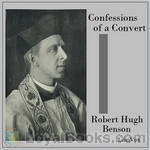 Confessions of a Convert
Confessions of a Convert
Robert Hugh Benson was the youngest son of Edward White Benson, the Archbishop of Canterbury and his wife Mary. Benson was was a prolific and popular writer during his time, and in 1903 he became a prominent convert to the Roman Catholic Church from Anglicanism . In 1904 he was ordained a Catholic priest.This book is his personal story of his journey to the Catholic faith, containing comparisons between Catholicism and the Anglican religion. | |
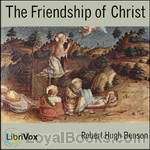 The Friendship of Christ
The Friendship of Christ
Robert Hugh Benson, who was educated at Eton College and Trinity College, Cambridge, was ordained an Anglican priest in 1895 by his father, the Archbishop of Canterbury. Eight years later, after weighty consideration, Robert Benson converted to Roman Catholicism. In 1904 he was ordained a Roman Catholic priest and took up residence in Cambridge, where he ministered to Roman Catholic students as their unofficial chaplain. In 1911, he was made a monsignor. Despite the brevity of his earthly life, Benson... | |
 Dawn of All
Dawn of All
In a former book, called "Lord of the World," I attempted to sketch the kind of developments a hundred years hence which, I thought, might reasonably be expected if the present lines of what is called "modern thought" were only prolonged far enough; and I was informed repeatedly that the effect of the book was exceedingly depressing and discouraging to optimistic Christians. In the present book I am attempting -- also in parable form -- not in the least to withdraw anything that I said in the former,... | |
By: Robert Michael Ballantyne (1825-1894) | |
|---|---|
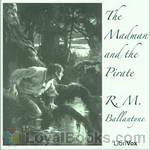 The Madman And The Pirate
The Madman And The Pirate
R. M. Ballantyne (April 24, 1825 – February 8, 1894) was a Scottish juvenile fiction writer. Born Robert Michael Ballantyne in Edinburgh, he was part of a famous family of printers and publishers. At the age of 16 he went to Canada and was six years in the service of the Hudson’s Bay Company. He returned to Scotland in 1847, and published his first book the following year, Hudson’s Bay: or, Life in the Wilds of North America. For some time he was employed by Messrs Constable, the publishers, but in 1856 he gave up business for the profession of literature, and began the series of adventure stories for the young with which his name is popularly associated. | |
 My Doggie and I
My Doggie and I
This story surrounds a child waif, a young woman, a young gentleman doctor, and an elderly lady. This tale unfolds the story of a bond that brings these unlikely friends together and merges their separate paths of life into one common path. The bond is "Dumps", or "Pompey", the "doggie". With many twists, turns, and uncertainties, the ending may surprise the reader. All's well that ends well in this doggie "tail". (Introduction by Allyson Hester) | |
 Fighting the Flames
Fighting the Flames
| |
 Twice Bought
Twice Bought
This story is set in the gold fields of Oregon, where Tom Brixton, and his best friend, Fred Westly, are digging gold to try to “make their pile”. Before leaving England, the steady and God-fearing Fred had promised Tom's mother that he would do his best to take care of his friend, but in spite of all his efforts, Tom had fallen in with bad companions and taken to gambling. He was convinced that he could make his fortune quicker by attempting to increase it at the dice or card table, and all his friend's attempts to make him see his errors were unavailing... | |
By: Robert Young (1822-1888) | |
|---|---|
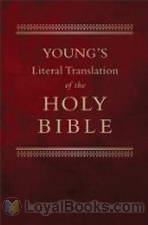 The Bible, Young's Literal Translation (YLT) - Genesis
The Bible, Young's Literal Translation (YLT) - Genesis
Young's Literal Translation is a translation of the Bible into English, published in 1862. The translation was made by Robert Young, compiler of Young's Analytical Concordance to the Bible and Concise Critical Comments on the New Testament. Young produced a "Revised Version" of the translation in 1887. After he died on October 14, 1888, the publisher in 1898 released a new Revised Edition.Young's Literal Translation in the 1898 Edition also consistently renders the Hebrew Tetragrammaton (divine name)... | |
By: Rosalind Goforth (1864-1942) | |
|---|---|
 How I Know God Answers Prayer
How I Know God Answers Prayer
This book is a testimony of how powerful prayer is, how God answers every prayer, even if it is not just how we want it answered. Rosalind Goforth was a missionary to China with her husband and children. She had many, many opportunities to prove God's faithfulness and he never failed her if she was willing to trust him and put her every problem and difficulty in his hands. Her life is a wonderful testimony of what prayer can do! | |
By: Rudolf Lothar (1865-1943) | |
|---|---|
 Golem: A legend of old Prague
Golem: A legend of old Prague
Rabbi Loeb creates a clay man to house a perfect soul that he hopes will not be blighted by human prejudices. The plan does not go as he hoped... This is one of many stories about the golem, all of which involve Rabbi Loeb , a 16th-century talmudic scholar known as The Maharal. Rodolf Lother was an Austrian writer. This story was published in the B'nai Brith journal The Menorah in 1896 and subsequently included in the author's German language book Der Golem: Phantasien und Historien . - Summary by Adrian Praetzellis | |
By: Rufus Jones (1863-1948) | |
|---|---|
 Nature and Authority of Conscience
Nature and Authority of Conscience
Rufus Matthew Jones was an American religious leader, writer, magazine editor, philosopher, and college professor. He was instrumental in the establishment of the Haverford Emergency Unit . One of the most influential Quakers of the 20th century, he was a Quaker historian and theologian as well as a philosopher. In 1917 he helped found the American Friends Service Committee. This work was delivered as a Swarthmore Lecture in August 1920 and was printed by the Swarthmore Press Ltd. | |
By: Russell Herman Conwell (1843-1925) | |
|---|---|
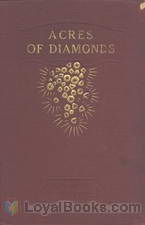 Acres of Diamonds
Acres of Diamonds
Text of famous inspirational lecture and biography of Russell Conwell, a Baptist minister and Temple University Founder | |
By: Sabine Baring-Gould (1834-1924) | |
|---|---|
 Sermons to Children
Sermons to Children
Twenty-three sermons where the truth to be taught is appended to a story as a Moral. Some of these sermons reflect the doctrines of infant baptism and transubstantiation. | |